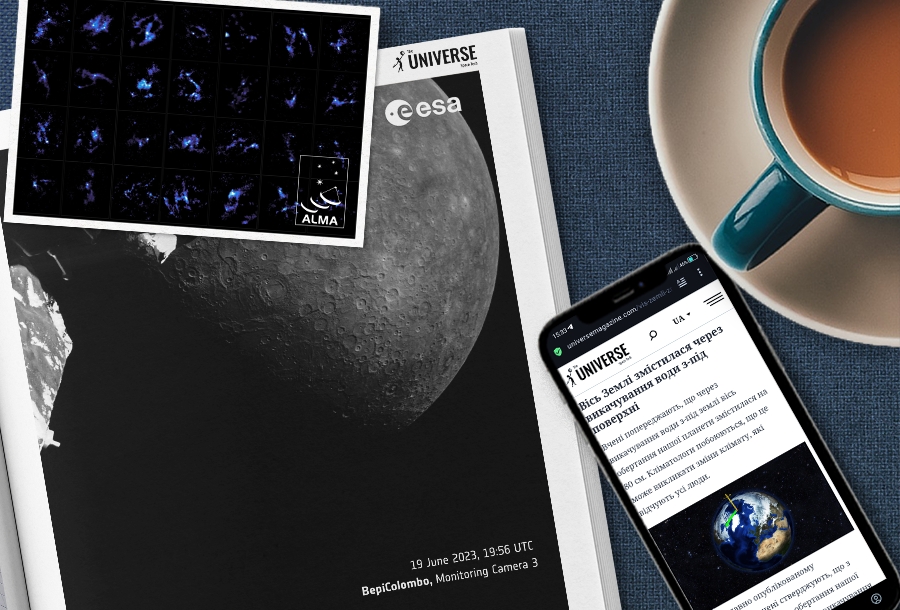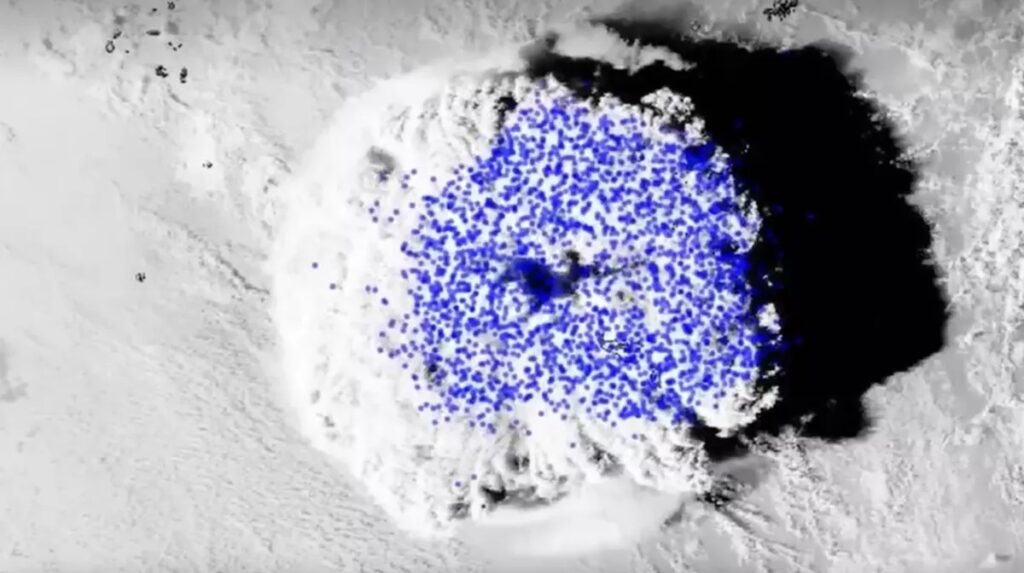A collection of the most interesting space news of the week: NASA has created a map of resources at the Moon’s South Pole; astronomers have discovered 800 embryonic giant stars, and we discuss the dangers of radiation in space and during a nuclear power plant explosion.
” There is nothing which can better deserve our patronage than the promotion of science and literature. Knowledge is in every country the surest basis of public happiness. “
― George Washington

Space tourist disappears during dive to the Titanic
One of the passengers who disappeared during a dive to the Titanic aboard the Titan submersible is British billionaire Hemish Garding. Last year, he took a tourist flight to space aboard the New Shepard suborbital spacecraft. The missing submersible belonged to OceanGate Expedition, a company specializing in organizing underwater excursions to the wreckage of the Titanic. The submersible went missing during a dive on June 18. It was carrying five people – the operator and four tourists, including British billionaire Hemish Garding.
Hemish Garding is the owner of Action Aviation, a company involved in the sale and operation of aviation technology. In June 2022, he took a tourist flight aboard the New Shepard suborbital spacecraft, reaching an altitude of 107 km. A year before that, he and Victor Veskovo made a dive into the Mariana Trench, setting a record for the deepest and longest dive.
ALMA detects 800 embryonic giant stars
Using the Atacama Large Millimeter Array (ALMA) of radio telescopes, an international team of astronomers has detected over 800 “stellar embryos” within massive gas and dust clouds. This discovery is significant for a better understanding of the process of massive star formation, which plays a crucial role in the creation of the building blocks of life. The finding was made during the study of 39 massive cosmic clouds, also known as infrared dark clouds (IRDC). It is believed that they serve as nurturing environments for massive stars.
Interestingly, according to the researchers’ calculations, 99% of the detected cores do not have the mass typically considered necessary for the formation of giant stars. This suggests that they may form through a different scenario than low-mass stars. Astronomers also speculate that the core’s density, rather than its total mass, may be the decisive factor in triggering the process of massive star formation. It can grow more efficiently by gradually accumulating surrounding material.
Italy faces the potential eruption of a supervolcano
There is a possibility that the Campi Flegrei supervolcano, also known as the Phlegraean Fields, may erupt soon. This is indicated by observations of earthquakes and ground uplift. In the event of a large-scale eruption, ash can cover the entire Europe. The Phlegraean Fields last erupted in 1538, but the volcanic activity was relatively localized at that time. Currently, almost 360,000 people live directly within the caldera area, including the city of Pozzuoli.
In recent decades, earthquakes have been continuously observed in the Phlegraean Fields area. The surface here is also slowly rising at a rate of up to 10 cm per year. Scientists attribute this to the slow filling of underground reservoirs with magma. The consequences of this are uncertain. According to experts’ estimates, the Phlegraean Fields have the potential to generate an eruption that would eject up to 1,000 km³ of rock into the air.
The Earth’s axis has shifted due to the extraction of water from underground
Scientists warn that the rotation axis of our planet has shifted by 80 cm due to the extraction of water from beneath the Earth’s surface. Climatologists fear that this may cause climate changes that will be felt by everyone. In a recently published study, scientists claim that from 1993 to 2010, the rotation axis of our planet shifted due to the extraction of groundwater to the surface. During this time, humanity has used 2,150 billion metric tons of water for its own needs, resulting in the formation of cavities underground and a noticeable change in mass distribution.
Since 2016, scientists have known that many anthropogenic processes on the planet’s surface affect its rotation. This refers not to the magnetic poles, which shift for natural but not entirely understood reasons, but rather to the shifting of the imaginary axis around which the Earth rotates. These changes have been tracked since the 19th century. It is known that in recent decades, the geographic pole has been shifting a few meters per year. The main causes of this are continental drift, melting glaciers, dam construction, and other factors.
NASA has created a map of resources at the Moon’s south pole
The experts from the LRO mission have published several maps of the Moon’s south pole. They demonstrate the potential locations of water ice deposits and the most favorable places for manned expeditions. Currently, the Moon’s south pole is the focus of attention for many space agencies and private companies. This is because some of its polar craters, which are never illuminated by the Sun, contain water ice deposits. These deposits can greatly facilitate the task of establishing permanent settlements by providing water, oxygen, and rocket fuel components to their inhabitants. The LRO mission experts have prepared several maps, with the first one showing the resource potential of the Moon’s north and south poles. The second map is entirely dedicated to the southern polar region of the Moon, allowing for the evaluation of different areas’ suitability for manned expeditions.
Photo of the week
European Space Agency (ESA) has released a video compiled from images captured during the recent flyby of Mercury by the BepiColombo mission. The footage shows craters covering the planet’s surface and a series of other geological formations. The first part of the video is composed of 217 images taken between June 19 and 20, 2023. The first image was captured when BepiColombo was at a distance of 1,789 km from Mercury, and the last image was taken from a distance of 331,755 km. We can see impact craters, fractures, and escarpments covering the planet’s surface.
Interesting fact: Nearly 200,000 lightning flashes

The eruption of the Tonga volcano (officially known as Hunga Tonga-Hunga Ha’apai) resulted in the most powerful atmospheric explosion ever recorded and also produced a record number of lightning strikes during an extremely powerful 11-hour thunderstorm that extended over 240 km. It caused the most intense thunderstorm ever witnessed, with 2,600 flashes per minute at its peak and a total of around 192,000 flashes during the 11-hour period. This thunderstorm occurred at an unprecedented altitude of 20 to 30 km, higher than any previously recorded lightning.
What to read over the weekend

There is growing concern worldwide that Russian occupiers may cause a catastrophe at the Zaporizhzhia Nuclear Power Plant under their control, leading to significant radiation contamination of Ukrainian territory. Meanwhile we know that there is also a significant amount of ionizing radiation in space that poses a threat to astronauts. However, there is a substantial difference between what should be feared in the first and second cases. We explain the dangers of radiation in space and in the event of a nuclear power plant explosion.
Read in the previous digest: Americans tested a prototype solar power station in space and deployed the first pharmaceutical factory in orbit: news digest.
